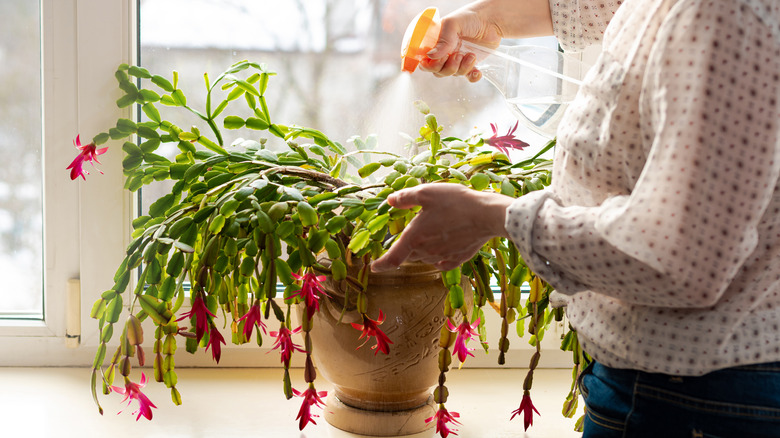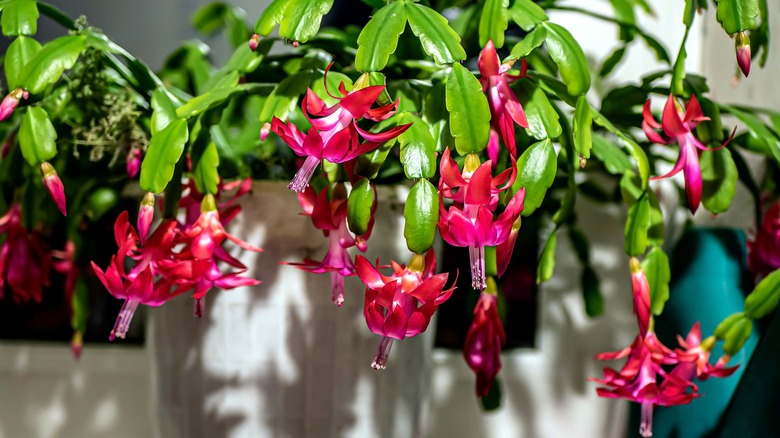The Hydrogen Peroxide Hack That'll Extend The Life Of Your Christmas Cactus
Christmas cacti are adored for their magenta flowers, waterfall-like dangle that stunningly spills over the pot, and rounded notched leaves — not to be mistaken with the Thanksgiving cactus that features spikey and pointed ends. The Christmas cactus may be a succulent, but it differs from other cacti in that it has a more tropical nature and will require more water than the average cactus. This creates a common overwatering issue, and these cacti are quite susceptible to root rot. But, before you reluctantly throw out the Christmas cactus you are sure you can't save, try spraying it with diluted hydrogen peroxide.
Hydrogen peroxide is a simple remedy to help plants reinforce and nourish their roots. While it is not considered a fertilizer, it has similar effects and will be easier on the wallet than the numerous fancy fertilizers lining the store shelves. It is also approved for use in botanical life by the United States Environmental Protection Agency (EPA) and is deemed safe for the environment. Hydrogen peroxide is made up of the same atoms as water with extra oxygen properties, the formula known as H2O2. The EPA doesn't identify any health risks when using it on plants as long as it is used in small doses and doesn't come in prolonged contact with the skin since it is an irritant. If your Christmas cactus is appropriately cared for, it can live for decades, and hydrogen peroxide is an excellent solution for any ailments it may be facing.
Using hydrogen peroxide on your Christmas cactus
Not only can hydrogen peroxide aid in the strength and health of your Christmas cactus, but it makes a positive impact on all plant life. As the solution does with our scrapes and cuts, it helps kill off bacteria in the soil and aids in the plant's oxygen intake, encouraging new growth. However, like with anything, hydrogen peroxide will harm your Christmas cactus if overused, resulting in burning and further deterioration. To apply hydrogen peroxide to your cactus, you will need to dilute it with water to ensure it is not too strong.
A 3% solution is easily found on store shelves, and typically, a teaspoon of peroxide per cup of water is a safe quantity. Placing this mixture in a spray bottle will make for easy application, and you can mist your plant weekly. If you're addressing more potent health problems, you'll want to take a more invasive approach to ensure the peroxide is reaching the plant's roots. You can do this by removing the plant from its pot and applying the mixture directly to the roots before replanting into new soil or using it to water the plant thoroughly. Keep in mind that succulents have more sensitive roots than other plants, so be cautious when applying hydrogen peroxide. Less is always best, with you having the ability to add more if needed rather than face the irreversible effects of using too much.

